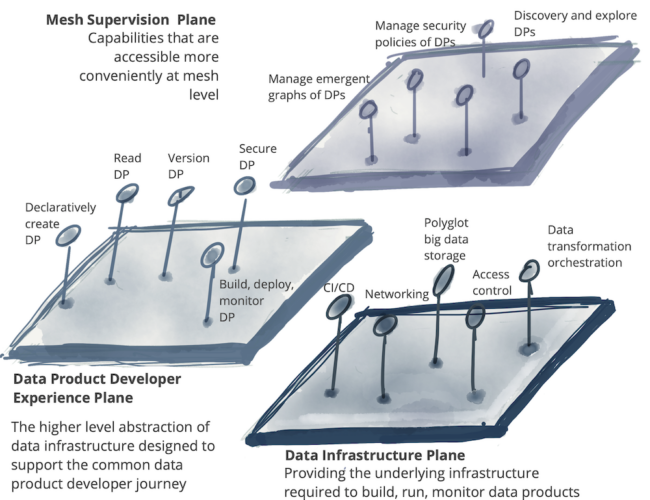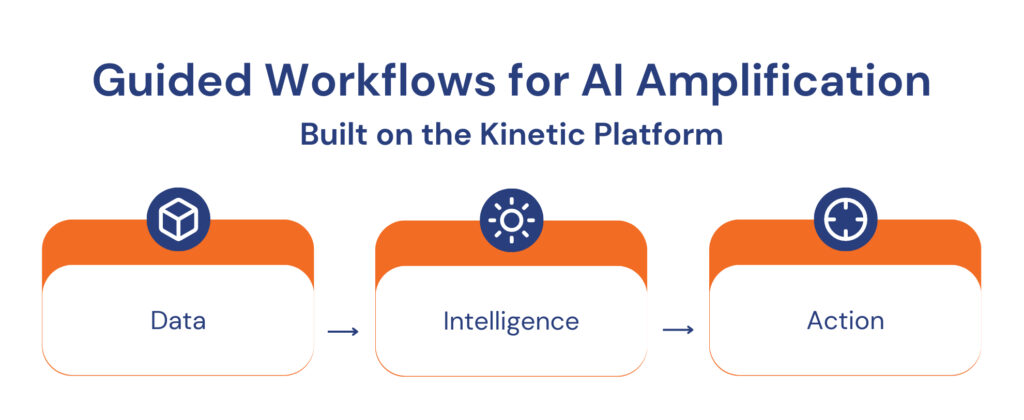Accelerating Decision Advantage
As the nature of combat evolves, our military relies on a rapidly increasing quantity and variety of data to coordinate battlefield and intelligence activity. To support that mission and enable warfighters across armed services to act as one, the Department of Defense (DoD) is seeking to implement a Data Mesh architecture that will feed artificial intelligence (AI) models to speed the delivery of intelligence and decision making at all levels; Strategic, Operational, and Tactical.
For a Data Mesh and AI to succeed for the DoD, it’s vital that the Chief Digital and Artificial Intelligence Officer (CDAO) build a unified, self-service digital experience to streamline access to data, systems, and tools for warfighters that minimizes complexity and enables rapid operationalization of data processes. To do this, the CDAO needs to employ an engagement layer that abstracts the complexity of back-end systems and provides users with an intuitive “single point of entry” to interact collaboratively with data providers and domains.
What is Data Mesh?
Data Mesh is an innovative architecture for collecting, managing, and delivering enterprise data. At its foundation is the notion that “domains” (functional units within a business, government agency, or service branch) should be able to define and control, and have responsibility for governance over their own data products—without relying on centralized IT or data analytics teams.
The Data Mesh Concept is based on four principles:
- decentralized, domain-based data ownership;
- data delivered as a product;
- data use via a self-service platform; and
- federated data governance.

How Data Mesh and AI Enable the “Data to Intelligence to Action” Workflow
The DoD relies heavily on both large quantities of data and rapid analysis to make critical decisions. The process of “Data -> Intelligence -> Action” – an intricate sequence involving data storage, processing, analysis, and eventual deployment – is enabled by the federation of data sources at the back end and reliable self-service delivery at the front.
To overcome the obstacles the process presents, workflow automation that supports artificial intelligence (AI) in the military offers valuable benefits:
- Enhanced operational efficiency
- Accelerated decision-making
- Improved situational awareness
Key Requirements for Data Mesh
The Decision Advantage resulting from Data Mesh is a strategic priority for the DoD to address increasing national security threats. To realize its vision for data-enabled Combined Joint All Domain Command and Control (CJADC2), four vital requirements the CDAO has defined for a data mesh are:
Kinetic Data’s Digital Experience Platform (DXP) meets these requirements through an architecture designed for high reliability and fault tolerance; a low-code platform that enables process owners to build powerful but intuitive front-end applications in an iterative, agile manner; a robust security model; and the ability to integrate with virtually any back-end system or data source using any protocol imaginable, including REST, SOAP, SNMP, RPC, and more.
How Kinetic Data Streamlines the “Data to Intelligence to Action” Workflow
Kinetic Data provides a robust workflow platform to fluidly connect these components, unleashing the full potential of the “Data to Intelligence to Action” process.

A lack of integration results in siloed operations, delays in decision-making, and a less-than-optimal use of valuable data. In an environment as critical as the DoD, there’s a pressing need for a comprehensive workflow solution that can effectively tie these disparate tools and processes together. That’s what’s delivered when the capabilities of Data Mesh and AI are presented to users through Kinetic Data’s DXP.
Why Choose Kinetic Data for Self-Service DataOps in support of Data Mesh?
Our DXP separates concerns between the User Experience (UX) and the underlying systems of record. Our flexible, multi-tenant platform provides speed to innovation, agility to adapt to an ever-changing ecosystem, and unlimited scalability while enabling a consistent and intuitive self-service UX—increasing adoption, lowering risk, and lowering total life-cycle costs.
Our DXP Unifies the UX across complex ecosystems. Simplifying work. Accelerating decisions. (SRM, RMF, CCRI, ITSM, DEVSECOPS, DATAOPS, MLOPS, AI)
By leveraging a self-service-driven user experience for the Data Mesh, the CDAO can simplify access to relevant data and analytics services, reducing complexity, risk, and cost while empowering warfighters to operationalize data for mission needs.
Kinetic Platform Fundamentals
Unique Attributes
Learn about the Kinetic Platform Today.
When you're ready to learn how Kinetic Data can help your agency achieve better business outcomes, we're here.


